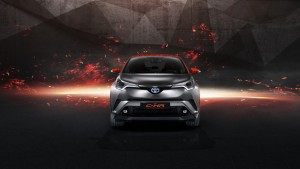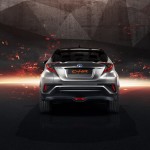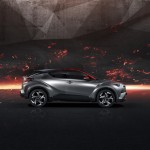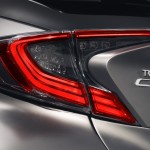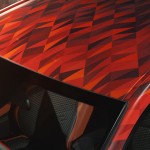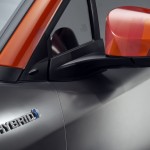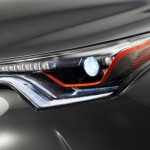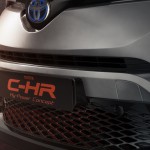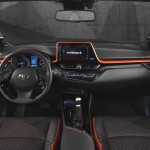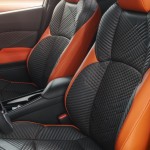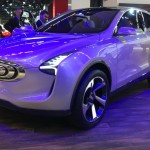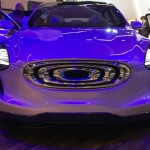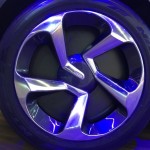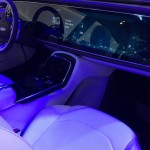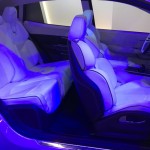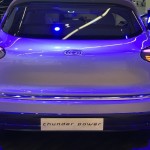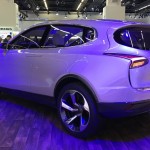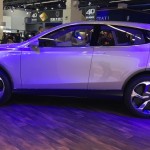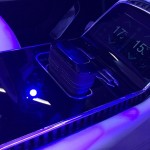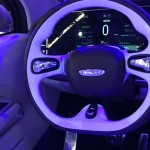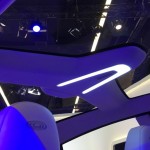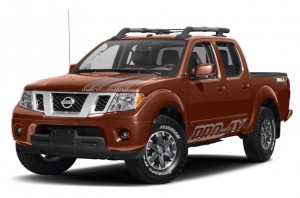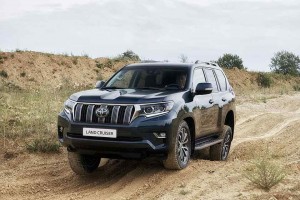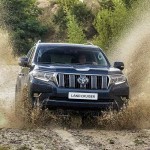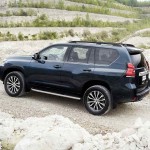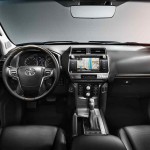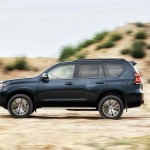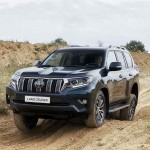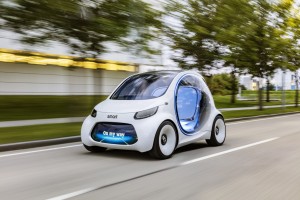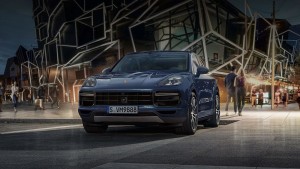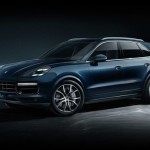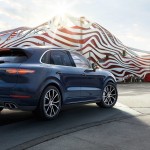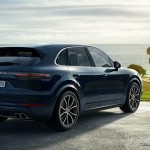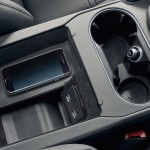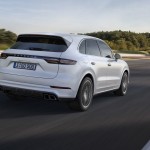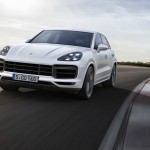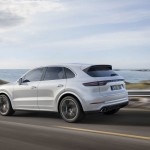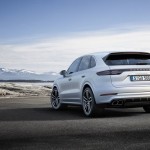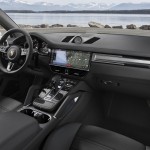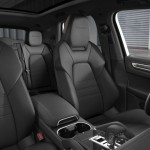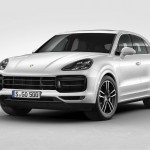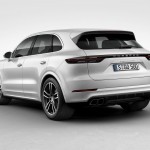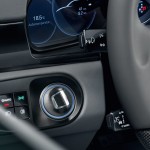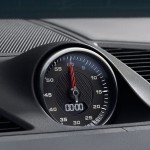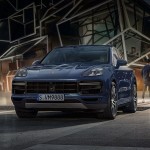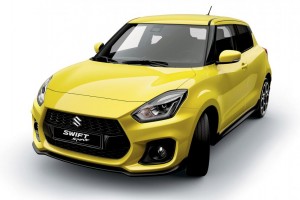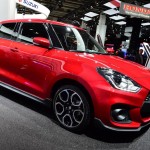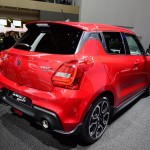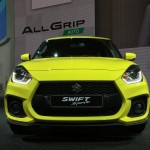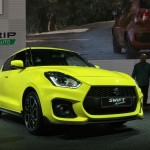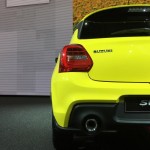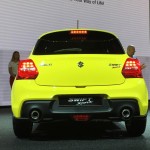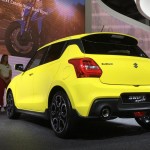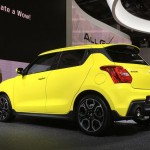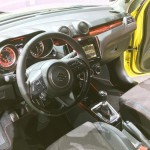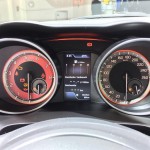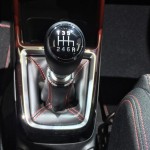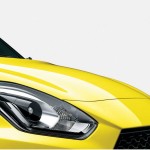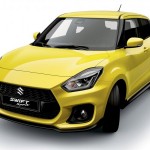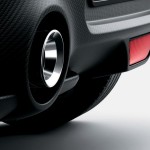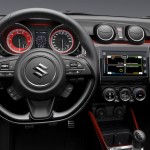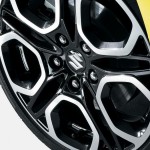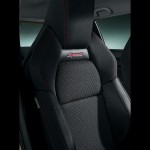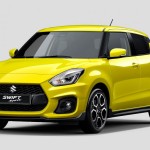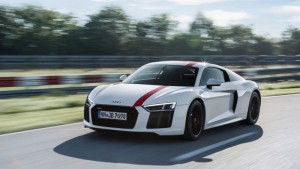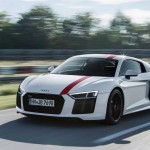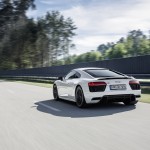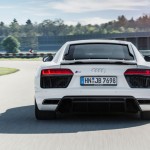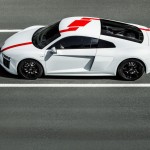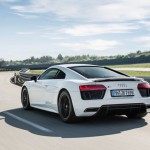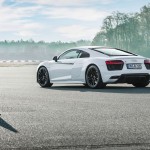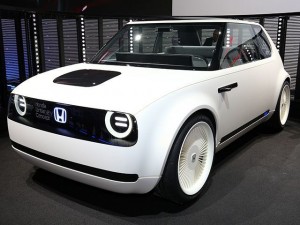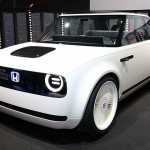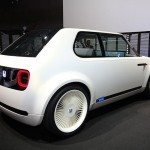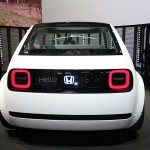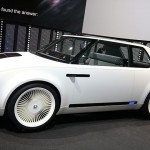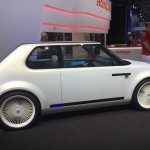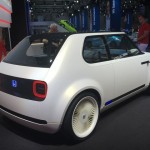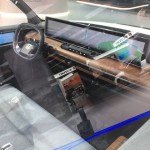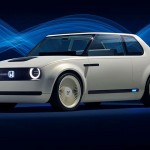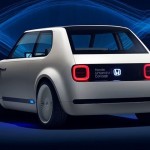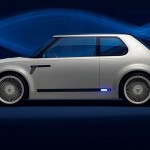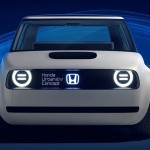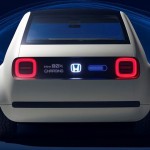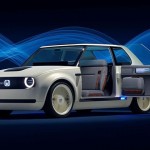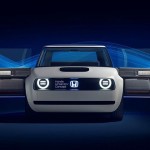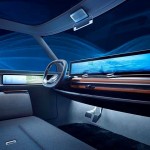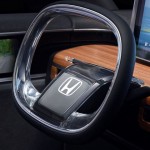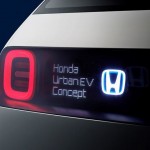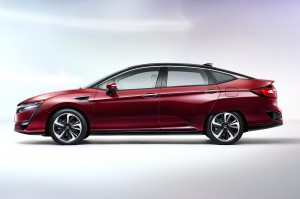Monthly Archives: September 2017
Toyota C-HR Hy-Power Concept Is The Ideal Car For Millennials
Since it was launched in 2016, the Toyota C-HR became one of the company’s most popular crossover because of its affordability, its size, and its fuel-efficient engines. It doesn’t have a cult following like Honda’s CRV, but C-HR continues to stand out because of its stylish and youthful design.
Now, a team of designers from ED2, Toyota’s European design studio, came up with the Hy-Power Concept that added features both inside and out and updated the hybrid to a more powerful drivetrain.
The Toyota C-HR Hy-Power Concept was unveiled at the 2017 Frankfurt Motor Show. The moment you set eyes on it, you’ll know why it is a big deal if it sees production. Basically, the concept is like a personalized C-HR and the design is actually doable and possible and not at all out of this world compared to other concepts.
Exterior
The first thing the design team did is to fit the C-HR with a new paint called Dark Carbon. The purpose of this is to enhance the interplay between the muscular surfaces and the sharp lines. Dark Carbon is essentially a silver hue in a matte finish. It is then paired with a gloss black front lip spoiler, nose grille, and wheel arch trim, all of which contribute to a more aggressive appearance.
More, the concept features dark chrome in the headlamps, 20-inch alloy wheels, and Burning Orange highlights in the lower grille, side mirror caps, A-pillars, and roof.
Interior
The C-HR HyPower concept is definitely sportier inside compared to the current generation. There’s a dark versus orange theme going on in the cabin that features black seats with orange headrests and bolsters. The seats have an asymmetrical quilting pattern on the seatbacks, cushions, and door panels in bright Burning Orange yarn.
Drivetrain
All details are still under wraps for the new drivetrain under this concept’s hood. What we know now is that the concept will be equipped with a hybrid powertrain that can produce 122 horsepower .
Thunder Power Unwraps Electric SUV at Frankfurt Motor Show
Hong Kong-based electric car company Thunder Power came to the 2017 Frankfurt Motor Show not only to update us about its Zagato-designed sedan EV, but also to unveil a new one—an electric SUV.
Willem Sham, the CEO of Thunder Power, revealed the Thunder Power SUV, which was designed in-house in Milan, Italy and uses the brand’s modular platform. It has an electric powertrain fitted, so the car can maximize its interior space and still maintain a low center of gravity.
To reduce drag time, the automaker said it tweaked the car’s aerodynamics. The company, however, is still tight-lipped about what the electric SUV has in store for us once it reached production.
On the outside, the electric SUV is attractive enough, minus the grille’s design. The interior is comfortable and there’s ample space on the cargo area, thanks to rear doors that open rearward. It also has a panoramic roof and a large digital screen that stretches across the dashboard.
But before the unveiling of the electric SUV, Thunder Power updated its audience that the designing and the possible production of the sedan is going well. In fact, a production-spec prototype was onstage with camouflage that resembles a topographic map. The sedan is reportedly undergoing testing for battery performance.
Sham revealed that the sedan EV will have a driving range of up to 650 kilometers on the NEDC cycle. He also announced a Launch Edition Coupe with only 488 examples available. The coupe will produce 654 horsepower on its electric powertrain. It will be paired with a four-wheel-drive system and uses a torque vectoring system.
The overall design of the Launch Edition Coupe will depend on the customer’s taste, but it will have an engraved plaque of the car’s serial number. The coupe will enter production soon, but deliveries will begin on the second quarter of 2019.
There’s A Next-Gen Nissan Frontier Pickup Coming Up
The long wait for an official word from Nissan is over. The Japanese automaker finally confirmed that a midsize Nissan Frontier pickup truck is being readied for a next-generation release. How many years has it been since we last saw an updated Frontier? The current generation dated back to the 2005 model year, which means there’s more than a decade between then and now.
The new Frontier will be built alongside the full-sized Titan pickup and several other models at Nissan’s factory in Canton, Mississippi. Though this is the kind of news we have been waiting for years, Nissan remains mum on what a new Frontier has in store for us.
All we have now are speculations, and pretty blown-up speculations at that. There were rumors in the past that the Frontier is going to be aligned with the Navara, Nissan’s global midsize pickup. Unlike the Frontier, the Navara has just been redesigned and deployed to various other markets globally. So popular are Nissan’s pickup trucks that the Navara spawned variants under different badges such as a Renault and a Mercedes-Benz.
According to what we’re hearing from the production side, the new Frontier pickup will look like a “heavy refresh” of the existing model. Well, if there was nothing wrong with the Frontier, why change it, right? What the next-generation Frontier is going to have is a new body, updated interior, and new engines to replace the 2.5-liter four-cylinder and 4.0-liter V-6 engines fitted in the current models.
Although Nissan is still unclear on what it wants to do in this segment, there’s plenty of breathing space for the Japanese automaker seeing as it is one of the most favorite brands to produce midsize pickup trucks. Even the current Frontier, which was last tweaked in 2005, is still selling well despite competitions from Toyota, Ford, Honda, and General Motors.
3 Key Features of the 2018 Toyota Land Cruiser Prado
The Toyota Land Cruiser Prado, which is a midsize member in the Land Cruiser range, just got updated. It’s a far cry from the massive Toyota Land Cruiser that is being sold in other markets. For this year, as shown Tuesday during the 2017 Frankfurt Motor Show, the Land Cruiser Prado is made more refined.
Promising to bring safer tech features, the Land Cruiser Prado that made its debut at Frankfurt also received a modernized exterior and cabin.
1. Exterior
For a sharper and more modern look, the Land Cruiser Prado’s grille and headlights have been revised with the headlights’ main beams being repositioned to avoid damage from obstacles presented by off-road driving conditions. The hood and front fenders also received some treatment as they have been reprofiled to aid visibility.
The lower corners of the front and rear bumpers are now angled upwards to improve off-road maneuverability. The redesigned rear also has new lamp clusters.
2. Interior
The cabin of the Land Cruiser Prado is definitely more refined and upscale than previous generations of the Land Cruiser, thanks to the upgrade on the instrument cluster, the switchgear, and the center stack. The seats are covered in a luxurious cream-colored leather that goes well with the steering wheel wrapped in black and tan. The interior definitely spells luxury and comfort.
3. Drivetrain
The powertrains available for the Land Cruiser Prado will depend on the market you are coming from. It will be offered in either turbocharged inline-4 or V-6 engines. The inline-4 can be paired together with gasoline or diesel while the V-6 engines will be matched with gasoline only. Buyers can choose between a manual or an automatic transmission.
The safety features are the ones the Land Cruiser Prado is boasting about. The technology includes autonomous features (depending on the market), collision warning, adaptive cruise control, rear cross traffic alert, automatic emergency braking, lane departure warning, and blind spot monitor.
Expect the 2018 Toyota Land Cruiser Prado to start its deliveries this November.
Smart Scraps Combustion Engine Production, To Go Full EV In 2019
By 2019, we will no longer see Smart vehicles with combustion engines, according to Smart CEO Annette Winkler. In the next three years, Smart will slowly move away from using combustion engines and will instead focus on designing and producing electric vehicles.
The move will start in Europe and North America with the Fortwo and Forfour in the forefront. The two models will be sold only with a full-electric drive in 2019. The Asian market and the rest of the world will follow “as soon as possible after.”
This is not the first time that an automaker is fully scrapping the production of combustion engines as more and more car manufacturers move towards an electrified future.
The EV Smarts, however, won’t have much of a range. The Fortwo’s current range is about 70 miles while the Forfour belongs on the same range. Winkler seemed to have thought about this move a lot, even the fact that the brand is only offering short-range EV cars.
For Smart, the pricing is more important than the range. To be able to have a longer range, the company would have to use bigger-capacity batteries and therefore, driving the prices up. Charging up the cars shouldn’t be a hassle at all since supermarkets and car parks will be fitted with fast charging stations.
The Smart CEO seems to know that not producing petrol engines means cutting off a big chunk of the market, but she’s taking it in stride. They have already “prepared” the factory and the dealers about the upcoming change in market reaction.
As you can remember, Smart was the first car to be designed especially for city use. It was also the first company to offer a customization and personalization packages in a cheap car. Do you often use your gadgets to change what’s on the dashboard? That’s Smart’s idea, too. It’s known to push boundaries, and as the first company to come up with an EV in Europe back in 2009, we’re sure Smart will do just fine.
3 Amazing Features of the 2019 Porsche Cayenne Turbo
As if Porsche hasn’t done enough on its Cayenne, it now launched the 2019 Cayenne Turbo at the Frankfurt Motor Show. The new Porsche Cayenne Turbo is definitely more powerful, sportier, and more aggressive. With a V-8 engine, the Turbo version of the Cayenne will surely give every competitor a run for its money.
1. Minimal Exterior Difference
So far, we haven’t seen a lot of difference between the base model, the S, and the Turbo. The three have the same headlights and general fascia, though Turbo’s side intakes and grill are larger. The Turbo has no fog lights up front and the radiator grille is more open compared to the other two models.
At the rear, the only differences are the rear diffuser and the square exhaust outlets. Topping off the Turbo’s more aggressive styling are 21-inch wheels.
2. Luxurious Interior
When you enter the Turbo, it almost feels likes the base model and the S model, albeit the instrument cluster in front of the driver has a single analogue gauge in the center with a seven-inch digital display on either side. On the right, you can find a 12.3-inch infotainment and navigation display.
Standard equipment that went along with the cool setup of the instrument cluster are a 710-watt Bose sound system, 18-way sport seats, heated seats in the front and rear, heated steering wheel, and integrated headrests.
3. Lightweight but Powerful
Under the hood, as mentioned above, you’ll find a new 4.0-liter V-8 engine that produces 550 horsepower and 567 pound-feet of torque. That’s an increase of 30 horsepower and 14 pound-feet of torque from the outgoing V-8. The engine is paired with Porsche’s new eight-speed automatic transmission with traction management and all-wheel drive.
The Porsche Cayenne Turbo can go from 0 to 60 mph in 3.9 seconds or 3.7 seconds if you have the Sport Chrono package. What makes this even more amazing is the fact that it comes with a new lightweight chassis that shaved off a few pounds compared to the previous generation.
The Cayenne Turbo promises a very smooth drive, thanks to the new three-chamber air suspension, active suspension management, and active shock absorber.
Top 3 Things About The New Suzuki Swift Sport Hatchback
It’s honestly cute as a button, so is it any wonder why the Suzuki Swift Sport Hatchback remains to be a favorite in whatever market it is in. The Swift Sport Hatchback looks like the Mini Cooper minus that expensive price tag. Perhaps, that’s where its appeal comes from.
Since it was introduced to the market back in 2005, the Swift Sport has been a favorite. It remains to be one today, though there are lots of competitions out there.
1. Powertrain
Because this is not your usual Swift, the Sport hatchback weighs 2,100 pounds and receives some muscles through the turbocharged 1.4-liter inline-four that can deliver 138 horsepower. It is paired with a six-speed manual transmission that works well with the front-wheel drive system.
To experience on-road smoothness and maneuverability, the Suzuki Swift Sport Hatchback is also equipped with 17-inch wheels while its tires are 1.6 inches wider than the previous and current generations. Why do the tires have to be wider? These will help the car for high-speed stability.
2. Exterior
Who doesn’t love how the Swift Sport Hatchback looks? For anyone who cannot purchase a Mini Cooper, here’s your next best thing. Now that the car has been upgraded, the grille and the front intakes are larger and angrier-looking than the regular model’s. There are also two big exhaust outlets that can be seen from the rear bumper.
3. Safety
It may be tiny, but the Swift is looking after its driver and passengers. Among its suite of active-safety tech are automated emergency braking and lane departure warning.
The Suzuki Swift Sport Hatchback can compete with the Ford Fiesta ST, but unfortunately for American consumers, they won’t ever get their hands on a Suzuki since this has pulled out from American shores years ago. For whatever reason, the brand failed to capture the American market.
2018 Audi R8 V10 RWS Sets New Standards
The 2018 Audi R8 V10 RWS looks to be the reason why Audi decided to rename its performance division from Quattro GmbH to Audi Sport. It’s definitely nothing like any model the Quattro came up with. The 2018 Audi R8 V10 RWS is on a whole new spectrum of its own with the RWS actually standing for Rear Wheel Series.
So, the 2018 Audi R8 V10 RWS is going to have a rear-wheel-drive setup, something that we might see in future high-performance Audis seeing as what RWS stands for. That’s nothing new to enthusiasts, of course, though it’s still a a missed opportunity if Audi will not come up with another vehicle that sends torque to its rear wheels.
Exterior and Interior
Visually, the second-generation R8 looks menacing. It has a matte black grille and front and rear airflow openings, as well as a gloss black upper side blade on the coupe. For coupe owners, you’ll also get a chance to have that red vinyl trim stripe that extends from the front left to the right rear. Capping everything off are the massive black 19-inch wheels wrapped in 35-series rubber.
Once inside, you’ll see that the R8 RWS received sport seats (standard on all trim levels).
Power
The R8 RWS will pack a power of 540 horsepower, which is enough to match the base R8 V10 Quattro but not the 610 horsepower of the R8 V10 Plus. The R8 RWS will use the naturally aspirated 5.2-liter V-10 engines. Since the car is not being offered in an all-wheel drive configuration, this means that the car will be a little lighter in weight and there will be less mechanical drag in the powertrain. By comparison, the all-wheel-drive R8 has a curb weight 3,615 pounds, according to Audi.
The R8 RWS can go 0 to 62 mph in just 3.7 seconds. The top speed is put at 199 mph on the coupe and 198 mph on the Spyder.
There will only be 999 units of the Audi R8 V10 RWS available. It will probably be less expensive than the R8 V10 Quattro, which is being sold for $31,000 in Germany.
4 Things To Know About The Honda Urban EV Concept Retro Design
The Honda City garnered a cult following because it was cute and functional. Can we fault Honda for wanting to maximize the potential of the City? At the 2017 Frankfurt Motor Show, Honda unveiled a new concept called the Honda Urban EV. It is basically a City, but fitted with a retro design that we all adore.
1. City with Retro Touches
Think of the City, but with more compact dimensions, round headlights, rectangular grille, and a hood decal reminiscent of City’s previous generations. To complete the look, there’s also an upright tail with square taillights. Overall, the car looks every bit the compact sedan Honda has been updating every year, but with funkier exteriors and interiors.
The suicide doors all the more emphasize the concept’s retro design. The driver and passengers will enter through it and sit on a pair of benches. At their front is perhaps one of the largest displays ever to be fitted on a car. They should be able to view conventional information that shows infotainment details and everything related to the car’s all-electric powertrain.
2. Power Manager to Take Care of the Drivetrain
There is no word yet on the powertrain, but Honda has been vocal about the Power Manager, which debuted alongside the Urban EV concept. The new technology will be able to transfer energy between a vehicle, a home, and the broader energy grid. If you are familiar with Tesla’s Power Wall, wherein owners can store renewable energy and upload it to the grid, the Power Manager sounds a lot like it.
3. Modern Touches Can Be Found Too
Sure, the retro design will make the Urban EV Concept stand out, but there are modern touches, too. There’s a blue backlighting in the Honda grille badge, a programmable display screen between the headlights, and a display screen between the taillights that shows the charge status. Aside from those, there’s also the huge multi-spoke wheels.
4. Concept to Go Into Production
The Honda Urban EV Concept will not remain a concept. It will go into production for European markets in 2019. There is no word yet if this will cross the shore to the United States, but let’s hope that it will since the retro design is too cute for words.
Photo Source: CarBuzz
2018 Honda Clarity Plug-In Hybrid Has 47 Miles Electric Range
More good news for people who are looking forward to keeping the environment safe for the next generations. Instead of the 42-mile range on a single battery charge that the Honda Clarity plug-in hybrid model promised back at the New York Auto Show earlier this year, we’re instead getting a 47-mile electric range.
The Japanese automaker just announced that the production version of the 2018 Honda Clarity Plug-In Hybrid was able to travel 47 miles on battery power alone. This is official by the way, since it was during the EPA testing that the Clarity managed such range and power.
It also got a rating of 110 mpg-e and a gasoline-only rating of 44/40/42 mpg city/highway/combined. Though these are quite impressive numbers, it’s the overall range that has us questioning the Clarity. The official number clocked in at only 340 miles. The Toyota Prius Prime plug-in version, which is the Honda Clarity’s biggest competition, has a 25-mile EV range but can go up to 640 miles without a single fill-up.
The Honda Clarity Plug-In Hybrid uses a single electric motor that produces 181 horsepower and 232 lb-ft of torque. It also has a 1.5-liter inline-four that mostly acts as a generator for the 17-kW-hr battery pack.
Ray Mikiciuk, Honda’s assistant vice president in the United States, argued that Clarity’s “luxurious five-passenger package” should give the Japanese brand an advantage over its competitors in the plug-in hybrid market. Mikiciuk said that the combination of the “class-leading” 47-mile range and the cabin space should give the Clarity a top space on the hybrid plug-in ladder.
The move for a 47-mile-range vehicle proves that Honda is now ready and willing to usher in the brand to an electrified future. Seeing as even luxury carmakers have been moving to an electrified technology, this is a sound decision for the Japanese automaker.

